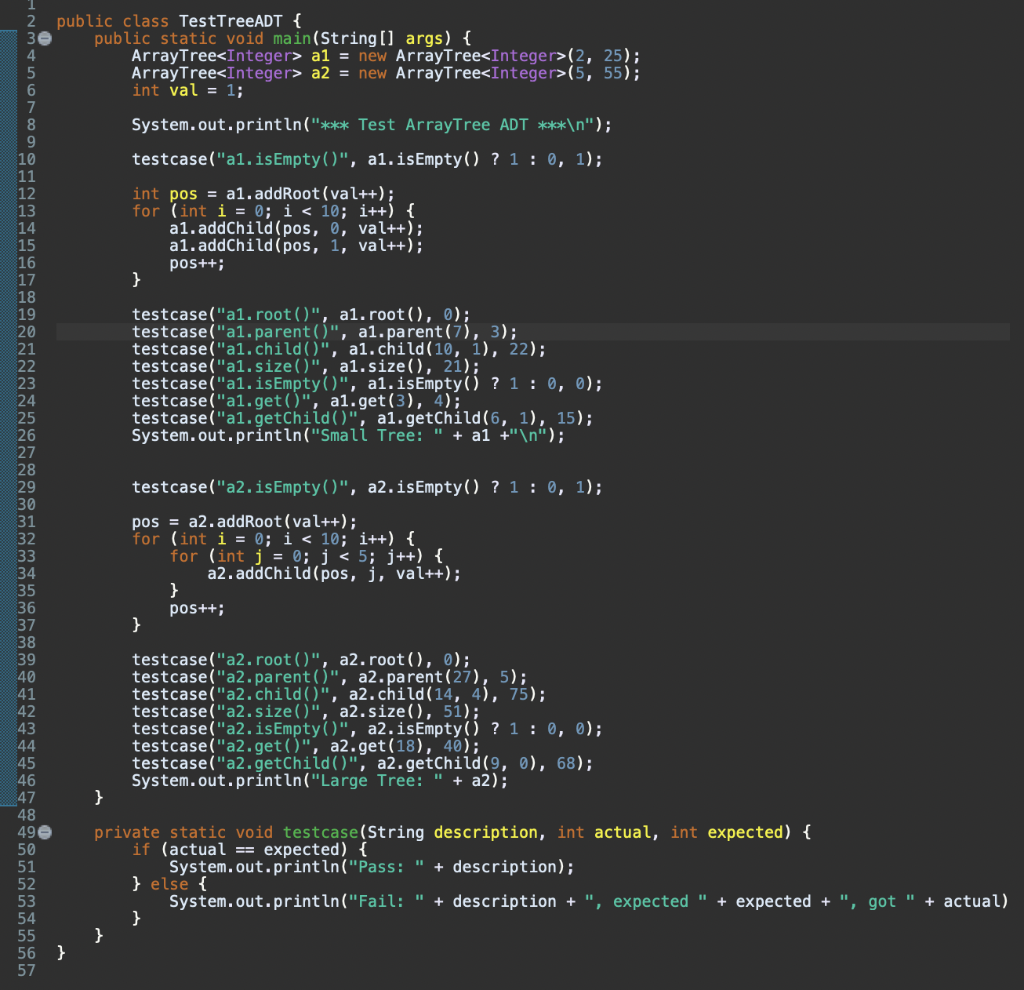Answered step by step
Verified Expert Solution
Question
1 Approved Answer
Develop the TreeADT as an array-based concrete implementation. Create the Array-based Tree ADT, Run it with TestTreeADT.java to ensure it works. TestTreeADT: 2. Additional Instructions
Develop the TreeADT as an array-based concrete implementation. Create the Array-based Tree ADT, Run it with TestTreeADT.java to ensure it works.


TestTreeADT:

Step by Step Solution
There are 3 Steps involved in it
Step: 1

Get Instant Access to Expert-Tailored Solutions
See step-by-step solutions with expert insights and AI powered tools for academic success
Step: 2

Step: 3

Ace Your Homework with AI
Get the answers you need in no time with our AI-driven, step-by-step assistance
Get Started


